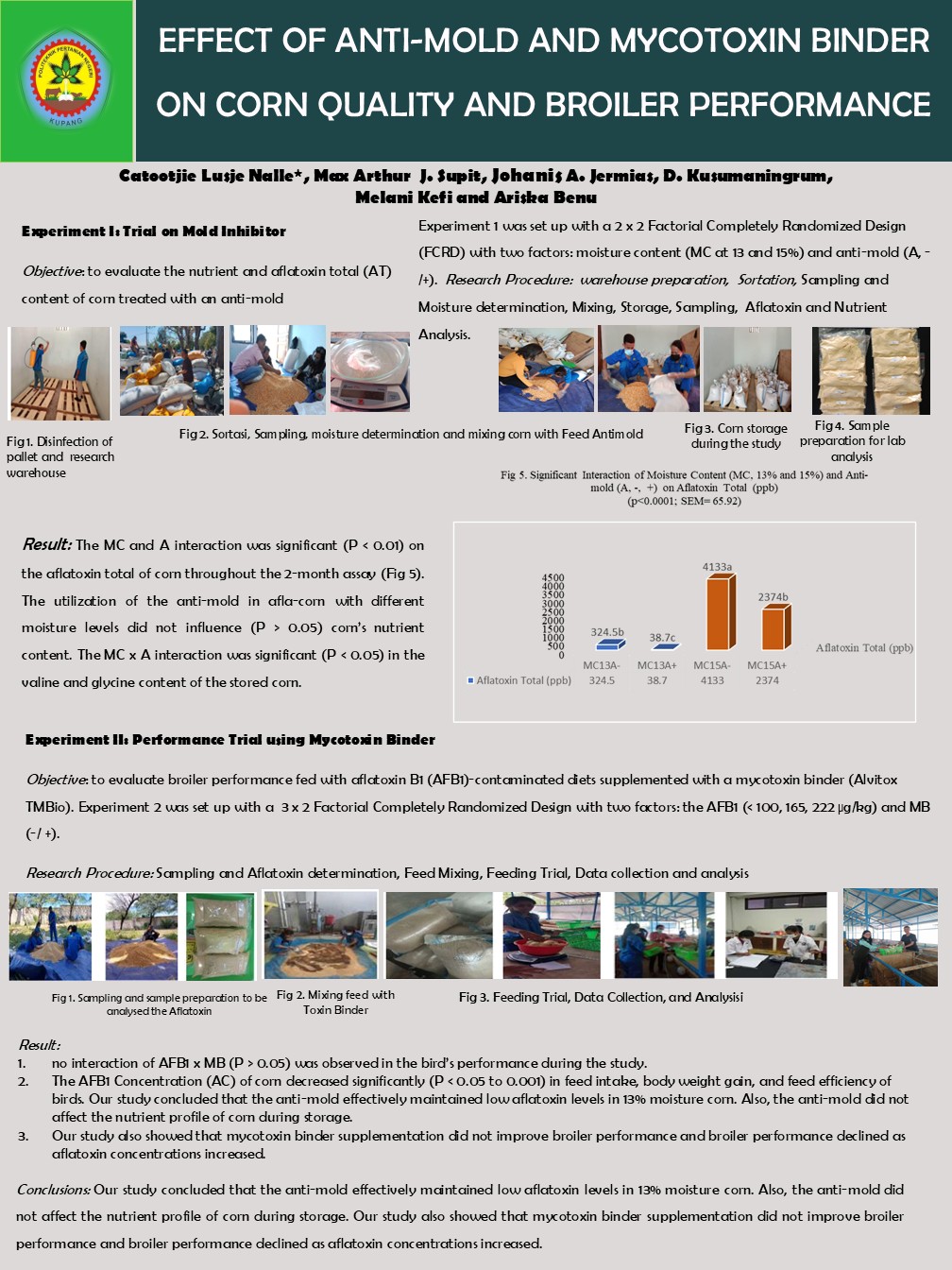PHYSICAL AND CHEMICAL QUALITIES OF CORN WITH DIFFERENT MOISTURE LEVELS SUPPLEMENTED WITH MOLD INHIBITOR
Downloads
Corn grain is used as the main energy source in poultry diet formulation. The quality of corn is easy to deteriorate during storage because of insect, fungal, and mycotoxin contamination. Efforts should be made to maintain the quality of corn during storage. The present study aimed to evaluate the physical and chemical quality of different moisture levels of corn supplemented by a mold inhibitor. A total of 750 kg of corn grain was used in the present study. A commercial mold inhibitor was used with a dose of 0.075%. The experimental design used was a 3 x 2 factorial complete randomized design. The first main factor was the different moisture levels (ML) of corn (≤10%, 10.0-10.9%; 11.0-11.9%), while the second main factor was mold inhibitor (MI, - or +). Thus, there were six treatment combinations, and each treatment comprised five replications. The results showed that ML, MI, and ML x MI interaction significantly (P<0.05 to 0.001) affected the percentage of grain damage and fungal grain but not (P>0.05) the moisture level of corn during 90 days of storage. Except for crude protein content, the ML did not affect (P>0.05) the proximate composition (PC) and gross energy (GE) content of corn. Except for dry matter (DM), the PC and GE content of corn were not affected (P>0.05) by MI. ML x MI interaction did not affect (P>0.05) the PC and GE content. The aflatoxin B1 (AFB1) content was similar (P>0.05) among all treatments. Except for histidine and lysine contents, the amino acid contents of corn were not affected by ML, MI, or ML x MI combination. In conclusion, the supplementation of MI in corn with different ML improved the physical quality, DM, ash, and GE content of corn grain during the storage; MI maintained the DM content but did not reduce the AFB1 content of corn. Except for histidine and lysine, the supplementation of MI in corn with different ML did not affect the amino acid content of corn.
Downloads

This work is licensed under a Creative Commons Attribution-NonCommercial-NoDerivatives 4.0 International License.
Authors who publish with this journal agree with the following terms:
- Authors retain copyright and grant the journal right of first publication, with the work 1 year after publication simultaneously licensed under a Creative Commons attribution-noncommerical-noderivates 4.0 International License that allows others to share, copy and redistribute the work in any medium or format, but only where the use is for non-commercial purposes and an acknowledgement of the work's authorship and initial publication in this journal is mentioned.
- Authors are able to enter into separate, additional contractual arrangements for the non-exclusive distribution of the journal's published version of the work (e.g., post it to an institutional repository or publish it in a book), with an acknowledgement of its initial publication in this journal.
- Authors are permitted and encouraged to post their work online (e.g., in institutional repositories or on their website) prior to and during the submission process, as it can lead to productive exchanges, as well as earlier and greater citation of published work (See The Effect of Open Access).




























